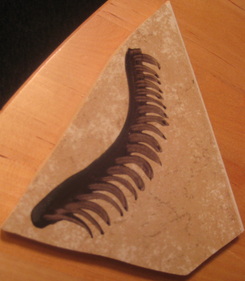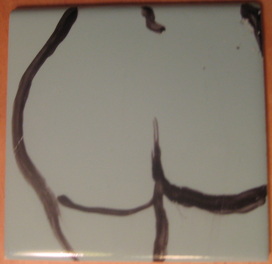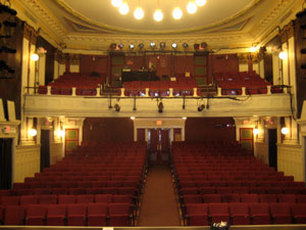
In fact, the “bake-off” (a term used for a writing exercise popularized by Pulitzer Prize-winning playwright Paula Vogel), in which dramatists are given several “ingredients” they must incorporate into a play that has to be written in 72 hours or less, has become a popular genre-within-the-genre of live theater.
There’s nothing like the surge of adrenalin that hits a playwright when you get your puzzle pieces and must fit them together with the clock ticking into a real play.
This year’s Philadelphia Bake-Off has led to the development of two new plays being presented at the Plays & Players PIFA New Play Festival, running from April 20-24 at the Rendell Room of the Kimmel Center. Plays start at 6pm, and admission is free, but reservations are highly recommended. (Note that the event is not suitable for children).
Plays & Players is the group organizing for the event, as well as celebrating the 100th anniversary of its founding in 2011; it was born right at the start of the time the Philadelphia International Festival of the Arts is celebrating: Paris from 1911-1920.

Plays & Players has hosted the annual Philadelphia Bake-Off, since 2009, in collaboration with PDC (Philadelphia Dramatists Center), a service organization for Philadelphia playwrights. Each year, P&P posts three "ingredients" online and give playwrights 72 hours to craft new plays from them.
“Then we gather for a pizza party with actors and read as many of the plays written as we can,” Student said. “Each year this event brings together veteran and first-time playwrights alike.”
PDC members in this year’s event were invited to submit their plays to the PIFA New Play Festival, and two plays were selected for developmental rehearsals and public staged readings in the festival.
This year’s ingredients are:
1. Riots -- That is, artistic riots, or riots precipitated by artistic daring, or perhaps artistic demagoguery, or artistic thumbings of the nose.
(suggested by Barbara Silverstein, Artistic Director of The Pennsylvania Opera Theater)
2. "That is probably the most repulsive thing I've ever seen."
(suggested by playwright Sheila Callaghan)
3. two ceramic tiles, created by Isaiah Zagar, an award-winning mosaic mural artist:

Cutler‘s work has appeared in all three Philadelphia Bake-Offs. Romero has been selected for the first time. They are two of the three playwrights in residence in a pilot program this year, called the PDC Residency at Plays & Players. Quinn Eli is the third P&P playwright in residence.
They were chosen to spend 14 months at P&P, in a program focused on developing them as artists, rather than on developing specific work.
“It is playwright-driven programming,” Student explained. “This year, on request of the playwrights, it has morphed into three different aspects: 1. Meeting and workshopping with artists ranging from landscape architects, puppet masters, and a local visual arts legend, Isaiah Zagar of Philadelphia's Magic Gardens fame. 2. Closed door developmental readings upon request from the playwrights. 3. Full weekday usage of our space for personal development or time to play with actors to experiment with their work.”
Romero’s play is Marilyn Monroe Has Sex for the Last Time with Groucho Marx. It’s directed by Rowen Haigh. Cutler’s play is The Stormy Hanky, directed by Cara Blouin
“Marilyn Monroe is a daring and at times disturbing play about the intersection of sexuality and obscenity,” Student said. “It puts its audience into the position of voyeur as we watch a woman role-playing as Marilyn Monroe and a man role-playing as Groucho Marx engage in various acts of carnal lust.”
Cutler’s Stormy Hanky takes an absurdist look at the anarchy that emerges when one of the characters inadvertently brings "back the 4th primary color". The artists riot and all colors and shapes in the world no longer hold their original integrity.
“These plays will explode from the page to the stage, inspired by its ingredients that spoke of artistic riots, repulsivity, and sexuality in visual art,” Student said. “While we cannot promise all audiences will like them, we hope that some people will love them and will be inspired by them. As PIFA reminds us, art is SUPPOSED to challenge. We need to encourage our new playwrights to experiment and push the boundaries of art. We hope this evening will accomplish just that.”

Its home stage, Plays & Players Theatre, at 1714 Delancey Place in Center City, was designed and constructed in 1912 by Philadelphia architect Amos W. Barnes. Beginning as The Little Theatre, it has also been known as the Delancey Street Theatre (1920) and The Philadelphia Theatre before being known as Plays & Players Theatre.
Ed note: Kathleen Warnock received financial compensation for this post from PIFA (Philadelphia International Festival of the Arts).
 RSS Feed
RSS Feed
